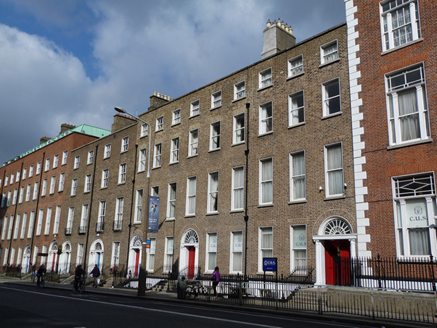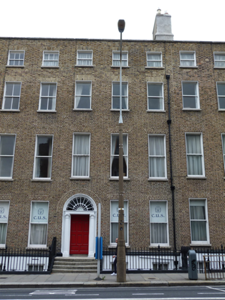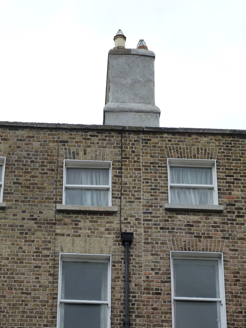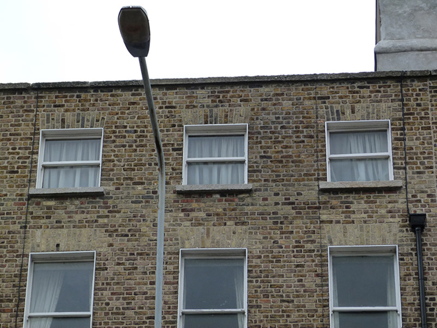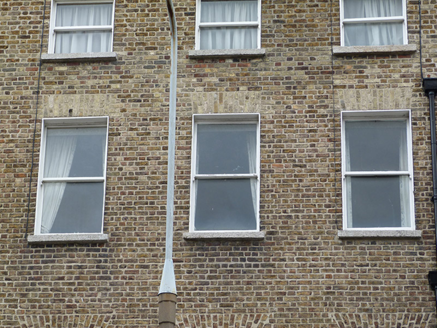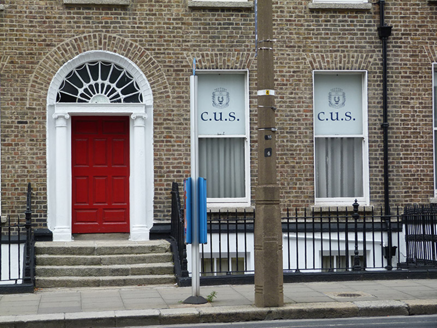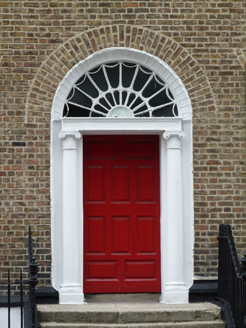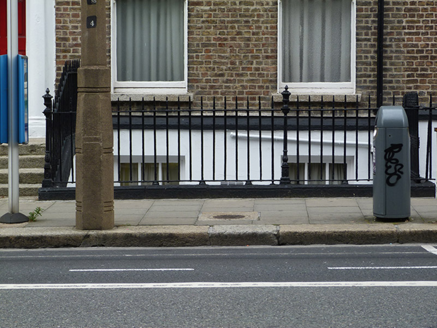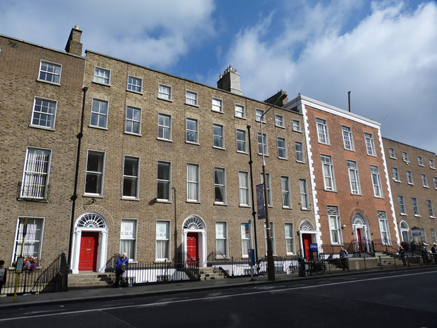Survey Data
Reg No
50930309
Rating
Regional
Categories of Special Interest
Architectural, Artistic, Social
Previous Name
Eastwood Hotel
Original Use
House
Historical Use
Hotel
In Use As
School
Date
1780 - 1820
Coordinates
316227, 233072
Date Recorded
25/09/2015
Date Updated
--/--/--
Description
Terraced three-bay, four-storey over basement former townhouse, built c. 1800, now in use as school, comprising Nos. 89-92 (50930307-10). M-profile pitched roof, hidden behind brick parapet with granite coping, having shouldered rendered chimneystacks with lipped yellow clay pots, parapet gutters and uPVC rainwater goods to east end. Yellow brick walls laid in Flemish bond, with masonry plinth course over rendered basement. Rendered wall to rear (north) elevation. Square-headed window openings with granite sills, brick voussoirs and patent reveals, with replacement one-over-one timber sliding sash windows. Six-over-six sashes to north elevation with three-over-three to third floor. Round-headed door opening with brick voussoirs, rendered reveals and Ionic columns supporting plain frieze and cornice having cobwebbed fanlight with fluted coving, and timber panelled door. Granite entrance platform with granite steps flanked by iron railings on masonry plinth with decorative corner posts, continuing east to enclose basement area.
Appraisal
A typical Georgian townhouse, built as part of a group of three, Nos. 88-90. The doorcase with Ionic columns and cobwebbed fanlight provides the decorative focus in the otherwise restrained façade. It makes a positive contribution to the streetscape and to the wider historic Georgian core of south Dublin. The house, with No. 92, was a hotel c. 1912. It was named the Eastwood Hotel under the management of John A Telford from c. 1916. William John Cumming is recorded as the owner c. 1925. After his death, it continued under the management of his wife Isabella until it closed c. 1960. (Thom’s Directory) The hotel was the scene of an attempted assassination of a British Army officer, on what became known as Bloody Sunday 1920, but he had left before the arrival of the IRA. Leeson Street forms part of an ancient routeway, Suesey Street, leading from the city to Donnybrook. Located within the Fitzwilliam Estate, which covered much of the south-east of the city, the street was named after Joseph Leeson, 1st Earl of Milltown. Plots were leased for development in the mid-eighteenth century but, apart from the north-western end, it remained undeveloped until the 1780s. It was largely completed by 1836.
